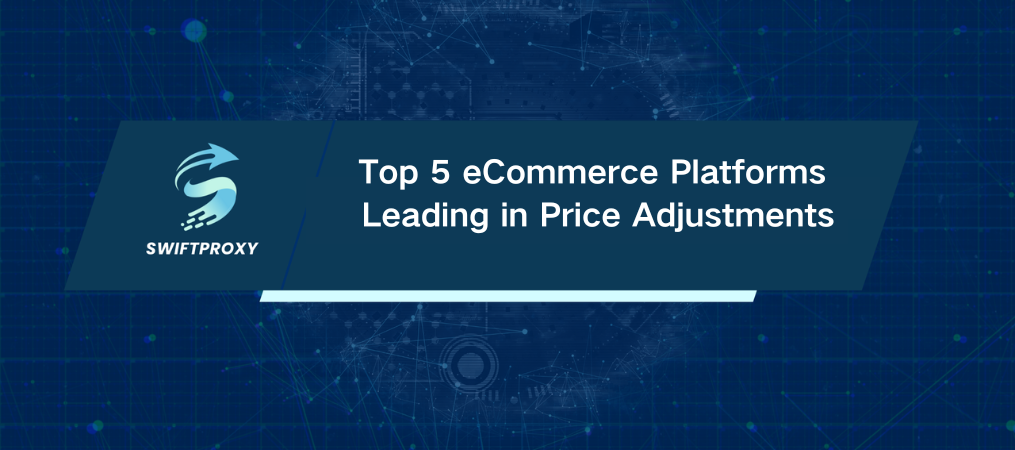Top 5 eCommerce Platforms Leading in Price Adjustments

Ever felt like the price of your favorite product changed before you could even click "Buy"? In today's eCommerce landscape, prices can fluctuate in real-time, sometimes by the minute. For both businesses and savvy shoppers, understanding these dynamic pricing shifts is crucial. It's no longer just about finding the right deal—it's about knowing when to strike. So, how do the top platforms stay ahead of the game?
We've dug deep into the eCommerce Dynamic Pricing Index, highlighting the top 5 platforms in the U.S. and Canada where prices are in constant motion. Let's break down what dynamic pricing really means, and how it benefits both businesses and shoppers.
Top 5 eCommerce Platforms Known for Frequent Price Changes
BestBuy.com (2.6 price changes per day)
BestBuy might not be as massive as its competitors, but it knows how to play the pricing game. Especially in electronics, the platform uses a mix of AI-powered tools to track trends and anticipate demand. This allows BestBuy to adjust prices rapidly, often influenced by local availability or competitor promotions. Plus, with their Price Match Guarantee, they make sure customers always feel like they're getting the best deal, which further drives frequent price changes.
Wayfair.com (3.6 price changes per day)
Wayfair has mastered the art of pricing for home furnishings. They adjust their prices according to shifts in demand and market trends, tapping into real-time data to maximize profitability. Whether it's a sudden surge in demand or seasonal trends, Wayfair's data-driven algorithms tweak prices swiftly, keeping them competitive while offering great deals.
Amazon.ca (4.3 price changes per day)
Amazon.ca isn't just a Canadian version of the global giant; it's a leader in dynamic pricing. The platform constantly adjusts prices based on local competition, stock levels, and shopper behavior. Amazon's sophisticated algorithms keep prices fluid, offering both sellers and buyers an adaptive pricing experience. Automated tools ensure that sellers can tweak their prices instantly, staying competitive while maximizing profit.
Walmart.ca (7 price changes per day)
Walmart.ca sees over 1.5 million shoppers daily—and they use dynamic pricing to keep them coming back. Whether it's electronics or groceries, Walmart monitors everything from demand to competitor prices to adjust their offerings in real-time. Their price-matching policies only encourage more frequent price changes, ensuring customers always get the best deal, no matter the category.
Amazon.com (12.6 price changes per day)
And at the top, we have Amazon.com, the undisputed king of eCommerce in the U.S. With over 37% of the market share in 2023, Amazon's dynamic pricing system is a well-oiled machine. Some sources suggest Amazon tweaks prices every 10 minutes—yes, every 10 minutes. From competitive pricing to demand shifts, Amazon's algorithm monitors a vast range of data points to ensure prices stay aligned with the market. For sellers, this means more opportunities to adjust prices, while shoppers get access to personalized pricing that reflects real-time demand.
What Is Dynamic Pricing and Why Does It Matter
Dynamic pricing is all about change—real-time change. Unlike static pricing, where a product's price stays the same for long periods, dynamic pricing adjusts based on factors like demand, competition, inventory levels, and even weather. Think of it as a pricing system that responds to the market 24/7.
For businesses, it's a way to stay nimble. Prices can rise during high-demand periods, and drop when there's less traffic. For consumers, it means potential deals, especially during off-peak times or seasonal sales.
Why Are Businesses Adopting Dynamic Pricing
Businesses want to sell more. When demand spikes, they can increase prices, maximizing revenue. But it's not always about making more money—sometimes, it's about staying competitive. During slower periods or clearance sales, lowering prices can help clear out inventory. Airlines and hotels have been doing this for years. Now, eCommerce is following suit. By adjusting prices based on supply and demand, businesses are tapping into the power of real-time data.
What's Available for Shoppers
It might seem like dynamic pricing is all about the business, but there's a win for shoppers too. Savvy buyers can track price drops, especially during off-peak seasons or sales events. Competition between retailers can drive down prices, making it easier to score deals. Some platforms even offer personalized pricing, based on browsing history or location. For the truly informed shopper, tools like price trackers and browser extensions can help catch the lowest prices.
Sure, prices may rise when demand is high, but understanding the system allows you to take advantage. Monitor price fluctuations and act when the price drops.
The Bottom Line
Dynamic pricing is transforming eCommerce. For businesses, it's a powerful way to optimize prices and maximize profits. For consumers, it opens up opportunities to score deals when the market shifts in their favor. The platforms topping this list—Amazon.com, Walmart.ca, Amazon.ca, Wayfair.com, and BestBuy.com—are leading the charge, proving that pricing strategies need to be flexible to stay competitive.
Want to learn more about how dynamic pricing works? Dive deeper into the full Dynamic Pricing Index and explore how you can leverage this trend for your own eCommerce strategy. If you're ready to optimize your pricing strategy or learn how to track price changes like a pro, don’t hesitate to reach out to Swiftproxy.

















































